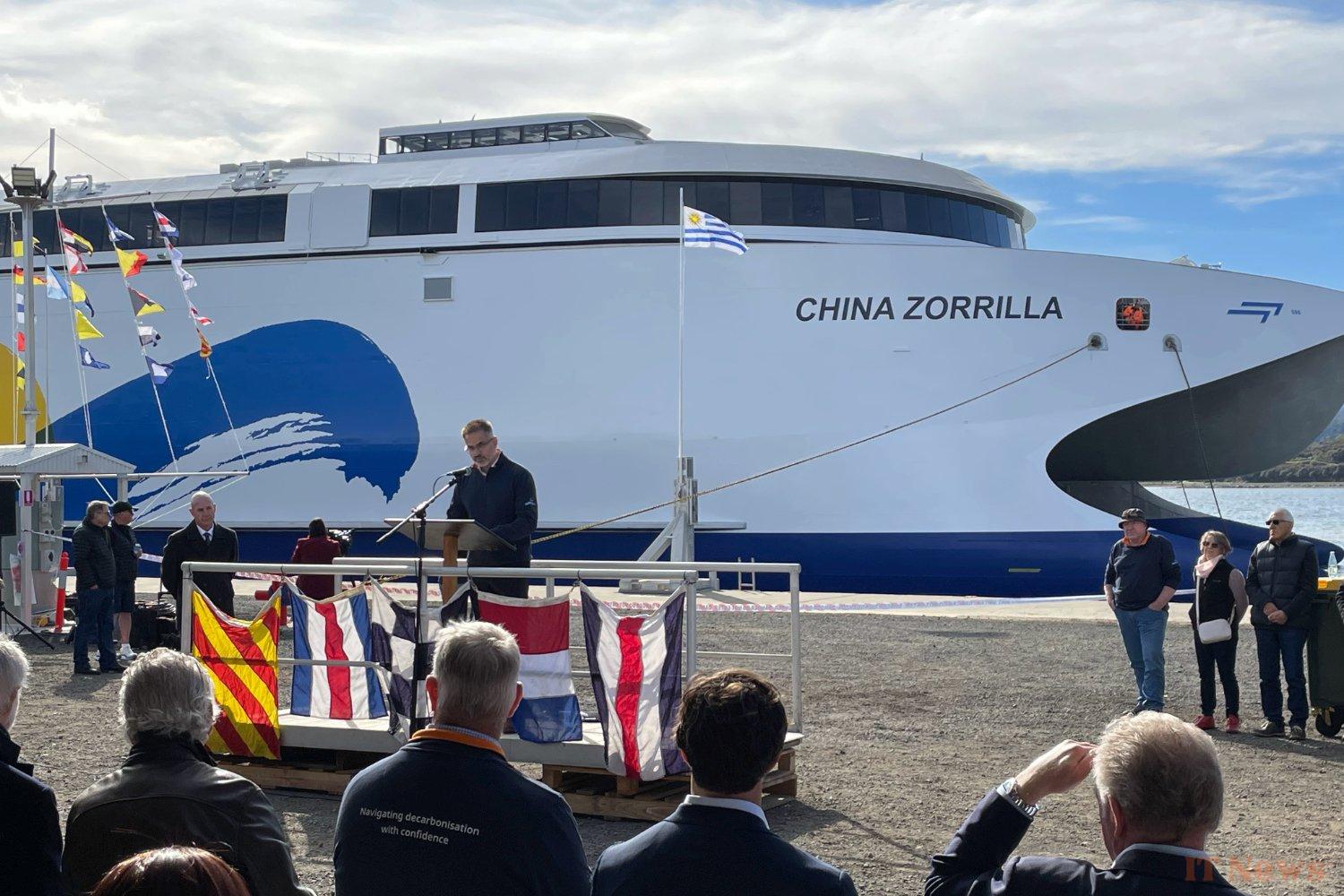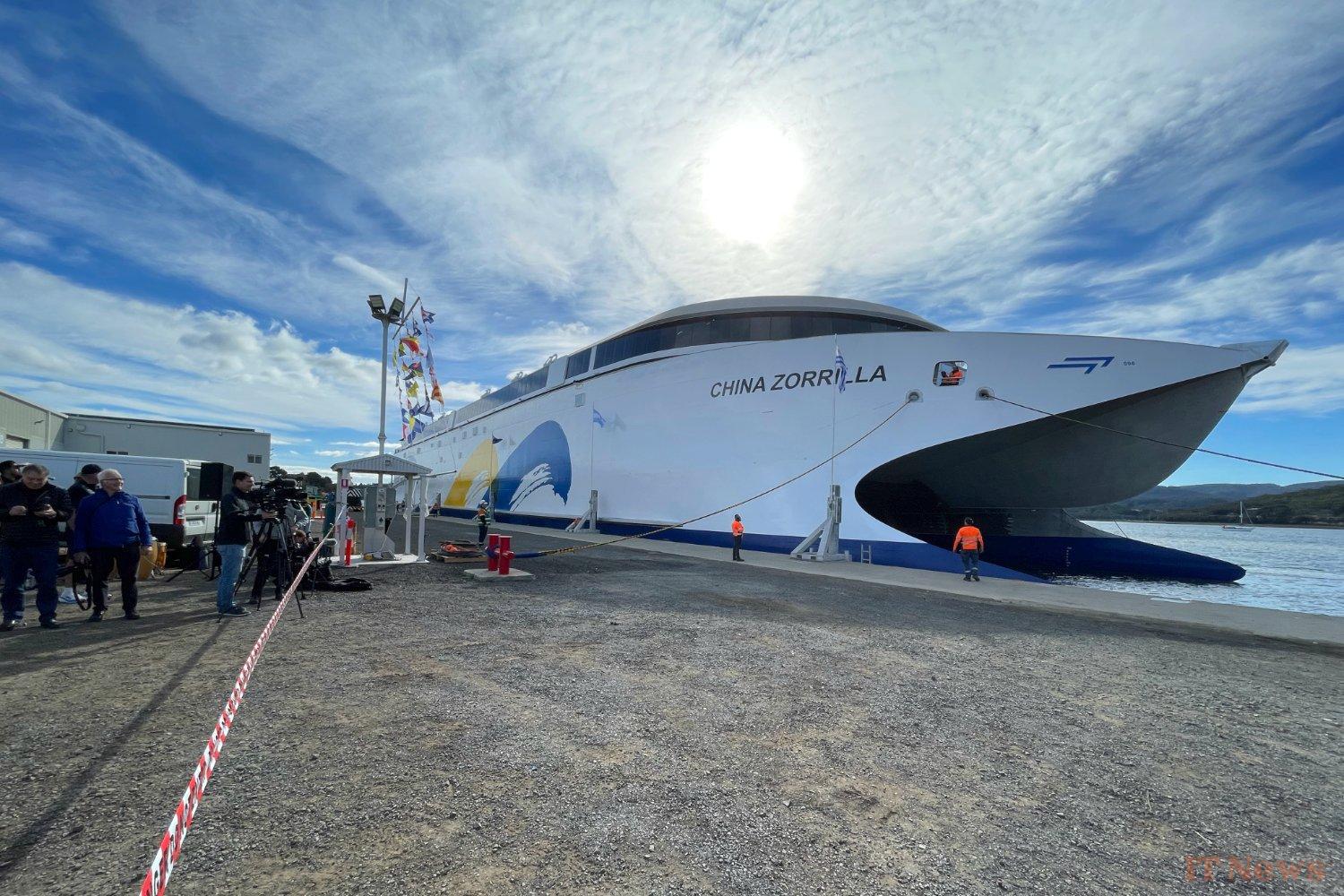It is named after a famous Uruguayan film actress who died in 2014. The new China Zorrilla is not a Chinese ship, as one might think, but an Australian vessel, built in Tasmania. Nor is it yet another fossil-fueled or natural gas-powered ship. It is making headlines today because it has become the largest electric ship in the world, capable of carrying 2,100 passengers and no fewer than 225 vehicles.
The shipowner Incat, who built it under the code name Incat Hull 096, officially christened it last Friday, May 3. The China Zorrilla was ordered by a South American company called Buquebus in 2019, which will operate it between Argentina and Uruguay, where some 60 kilometers separate the two countries (Buenos Aires, Argentina, is very close to the border).
Work is still needed to finalize the interior of the 130-meter-long ship, which includes a 2,300 m² duty-free shopping center – the largest in the world.
The China Zorrilla carries 40 MWh of batteries
To power the craft, Incat called on the equipment manufacturer Wärtsilä, a Finnish company specializing in the manufacture of electric generators and engines for boats. In total, eight hydrojets were installed under the ship. The engines are powered by 250 tons of Corvus Energy batteries, capable of storing 40 MWh. A capacity "four times more powerful than any marine installation in the world," claimed Incat's president, Robert Clifford.
Company CEO Stephan Casey said at the inauguration that the China Zorrilla ship "proves that large-scale, low-emission transport solutions are not only possible, but are already ready." He added: "We're not just building a ship, we're building the future.".
Two years ago, the China Zorrilla ferry project didn't consider primarily battery operation. Incat's plan at the time was to integrate a natural gas power plant to produce the energy needed for the electric motors. "Hull 096 is the most ambitious, complex, and important project we have ever undertaken. This ship is a game changer," Robert Clifford concluded.





0 Comments